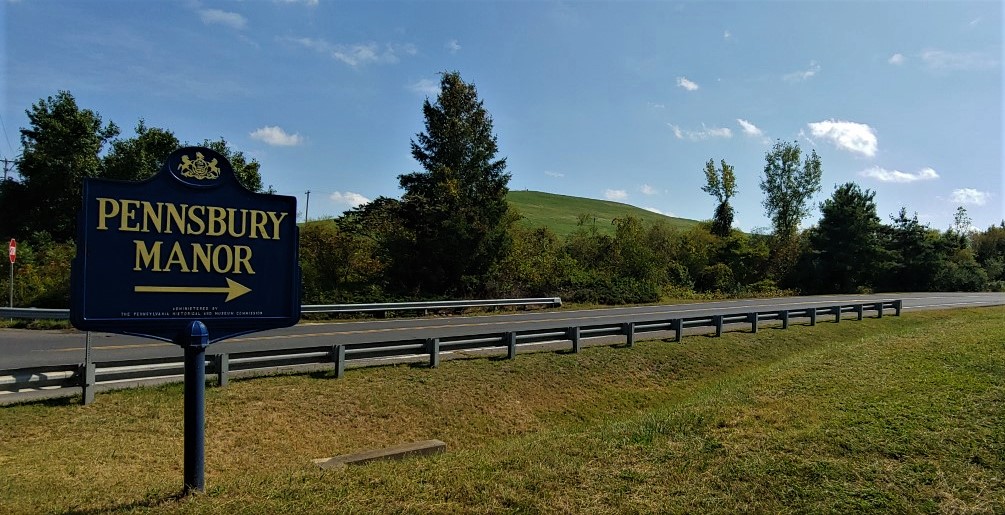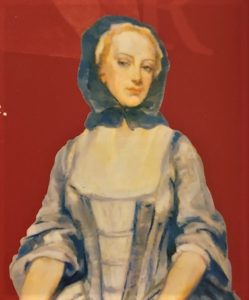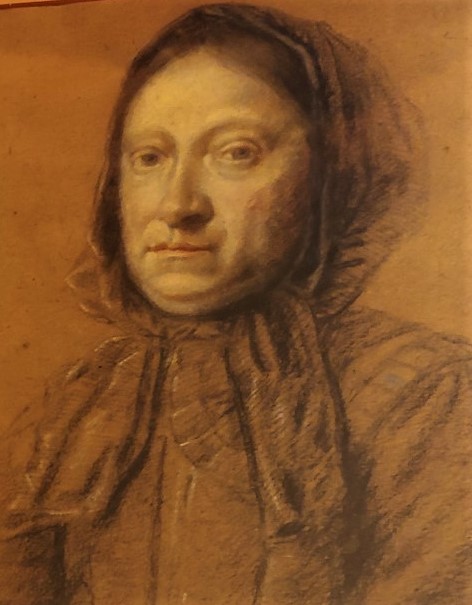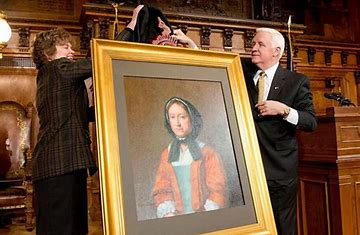The only female to govern Pennsylvania once resided in Falls Township.
I’ve had Hannah Callohill Jr. on my mind lately. I thought Pennsbury Manor might help fill out my understanding of her, the first and only female to govern Pennsylvania. She did it for 14 years. The Manor is where Hannah lived for two years as her husband went about the business of establishing a private British colony centered on religious freedom.
My journey by trail bike to the Manor took me from downtown Tullytown east on Bordentown Road bisecting Van Sciver Lake and into the county’s “Valley of the Landfills”. Four of them dominate the horizon as you approach Pennsbury Memorial Road. The route winds its way about a half-mile along the edge of one of the grassy, 200-foot-high mammoths, then enters a dense forest where Hannah Jr.’s manor house stands on the banks of the Delaware River.

It’s rare in modern America to find a woman with the “junior” suffix. But Hannah Callowhill Jr. came from unusual circumstances. Before her birth, her mother Hannah had a daughter Hannah who died early. A newborn daughter followed in 1671, again named Hannah with a suffix. Of six siblings, only Hannah Jr. survived childhood. She grew up in Bristol (England), a “delicate and pretty woman”, active in her Quaker religion, heir to the family fortune and uniquely knowledgeable about running her dad’s lucrative mercantile business with her widowed mom.
At age 25 Hannah attracted the eye of Pennsylvania founder William Penn who was more than twice her age. After a two-year courtship following the death of first wife Gulielma in 1694, William married Hannah. Biographers down through the years have described Gulielma as an extraordinary beauty whereas Hannah became known as “capable Hannah.” Gulielma, like Penn, was from British nobility; Hannah from the merchant class. Biographer Alison Duncan Hirsch put it this way recently: “Gulielma wore the glass slippers, while Hannah wore sturdy English walking shoes.”


Hannah gave birth to her first and only American child after arrival in Philadelphia with her husband on his second and final trip to his colony in 1699. The Penns, who had planned to remain in Pennsylvania, returned to London in 1701 to fight off threats by the British crown to seize the colony. Hannah would give birth to five other children over the next eight years, one who died in infancy. In 1708, the government imprisoned Penn for failure to pay his debts. Released after Quakers in England raised enough money to resolve his indebtedness, he suffered a series of stokes that left him permanently incapacitated in 1712.
The governorship of Pennsylvania fell to Hannah at a time when she was raising her five young kids. Known for a sweet disposition, she weighed the gravity of the situation and confided her “fear of mismanagement”, humbly saying “I’m but a woman.” But confidence born of necessity took hold. For the next six years until her husband’s death, she served as his proxy, and then administered Pennsylvania in her own right for the next eight years until her death at age 55.
From 3,000 miles away, Hannah changed the colony’s deputy governors twice; negotiated the settlement of a thorny border dispute with Maryland; curried friendship with the Lenapi Indians; and resolved legal conflicts with the English government over laws passed by her colonial government. She also successfully fought in court to preserve her children’s inheritance after stepson William Jr. born to Gulielma filed suit. In the end, Hannah’s three surviving sons and her grandsons remained proprietors of Pennsylvania until the American Revolution.
At the Manor, I parked my bike and entered its magnificent new museum which documents Hannah’s life and includes a life-sized statue of her. Among many artifacts is a miniaturized copy of Pennsylvania artist Ellen Cooper’s portrait of Hannah commissioned by Gov. Tom Corbett in 2014 and displayed in his office. It was removed in Gov. Tom Wolf’s administration to the State Museum in Harrisburg where it’s featured in the “Pennsylvania Icons” permanent exhibit. Cooper’s painting corrects what historians believe is an unflattering 1698 portrait by Henry G. Wright of Hannah when she was 25. Inexplicably she looks twice that age. Cooper modeled her with a more accurate younger countenance.
Today, Hannah Penn is the first woman designated by Congress as Honorary Citizen of the United States. Callowhill Street in Philadelphia memorializes her. Pennsbury Manor all year has eulogized her. Looking back on her life in 1830, Philadelphia historian John Watson was astounded. “Such a modest, unassuming, and diffident female, conducting such a national concern in the midst of her proper household avocations, with such complete but unpretending ability is probably without a parallel,” he wrote. “Let good wives read (her letters), that they may instruct themselves and teach their daughters to emulate her usefulness in like cases of family bereavements or extremities.”
Sources include “A Tale of Two Wives: Mythmaking and the Lives of Gulielma and Hannah Penn” by Alison Duncan Hirsch published by Penn State University and available on the web athttps://journals.psu.edu/phj/article/viewFile/25177/24946; and “Hannah Penn Level 2 – Pennsylvania People”, an excellent synopsis of Hannah’s life at https://pennsylvaniapeople.weebly.com/hannah-penn-level-2.html

